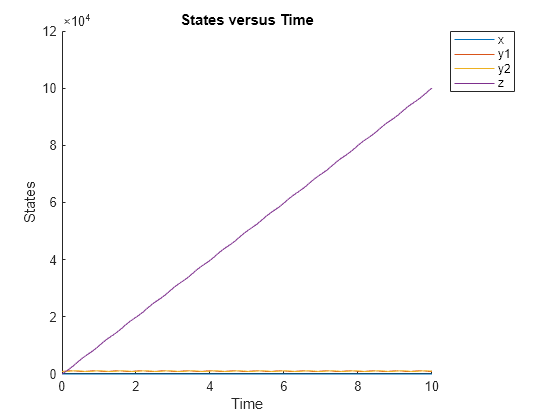StatesToLog
Specify species, compartment, or parameter data recorded
Description
The StatesToLog property specifies the species,
compartment, or parameter data to log during a simulation. This is
the data returned in x during execution of [t,x]
= sbiosimulate(modelObj). By default, all species, nonconstant
compartments, and nonconstant parameters are logged.
If you specify a particular list of species, compartments, or
parameters to be logged, the order of the states in the result SimData after
simulation is the same as the order specified.
Characteristics
| Applies to | Object: RuntimeOptions |
| Data type | Character vector, cell array of character vectors, object or vector of objects |
| Data values | Species objects, compartment objects, or parameter objects. Default is
'all', which means all species objects, all
nonconstant compartment objects and all nonconstant parameter
objects are logged. A nonconstant compartment or parameter means
that its ConstantValue property is set to false. |
| Access | Read/write |

